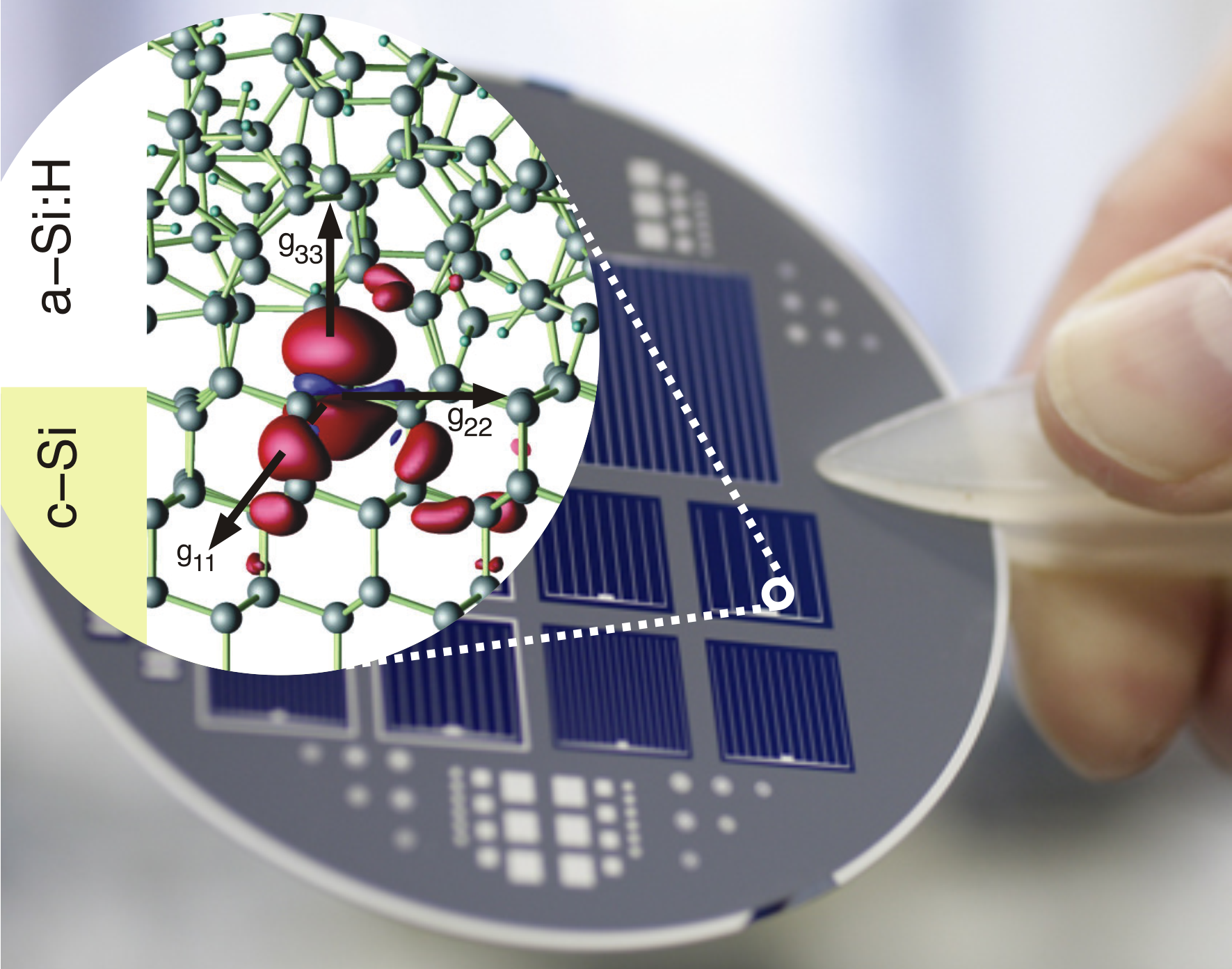Institute Silicon Photovoltaics
EPR for PV research
Both the EPR signal amplitude as well as its spectral shape contain highly desired information on performance determining paramagnetic states in PV materials. The amplitude of the EPR signal is in many cases directly proportional to the number of unpaired electron spins in the material. This allows quantification the number of defects and impurities in the material to be quantified. Thereby the conditions under which paramagnetic states are formed may be studied by taking EPR spectra of sample series where the deposition protocol or ambient conditions such as illumination or temperature, were modified.
Secondly, and probably more important, EPR spectra reflect the local and electronic structure of a paramagnetic state through a characteristic fingerprint. Advanced EPR methods are capable of providing detailed insight into the physical properties of the paramagnetic state under investigation e.g.: atomic and electronic structure, oxidation state as well as defect distributions in the material.
Material classes studied in our lab include:
- Thin film semiconductor materials and solar cells
- Catalytic transition metal ions
- Organic PV blends and solar cells
- Composite semiconductors

Fig. 1 Atomic and electronic structure of a recombination active defect (round insert: large and small spheres indicate Si and H atoms, respectively, local spin densities of the unpaired electron spin are depicted in blue and red) at the amorphous silicon (a-Si) crystalline silicon (c-Si) heterojunction interface of a HIT solar cell (see for further informations)
